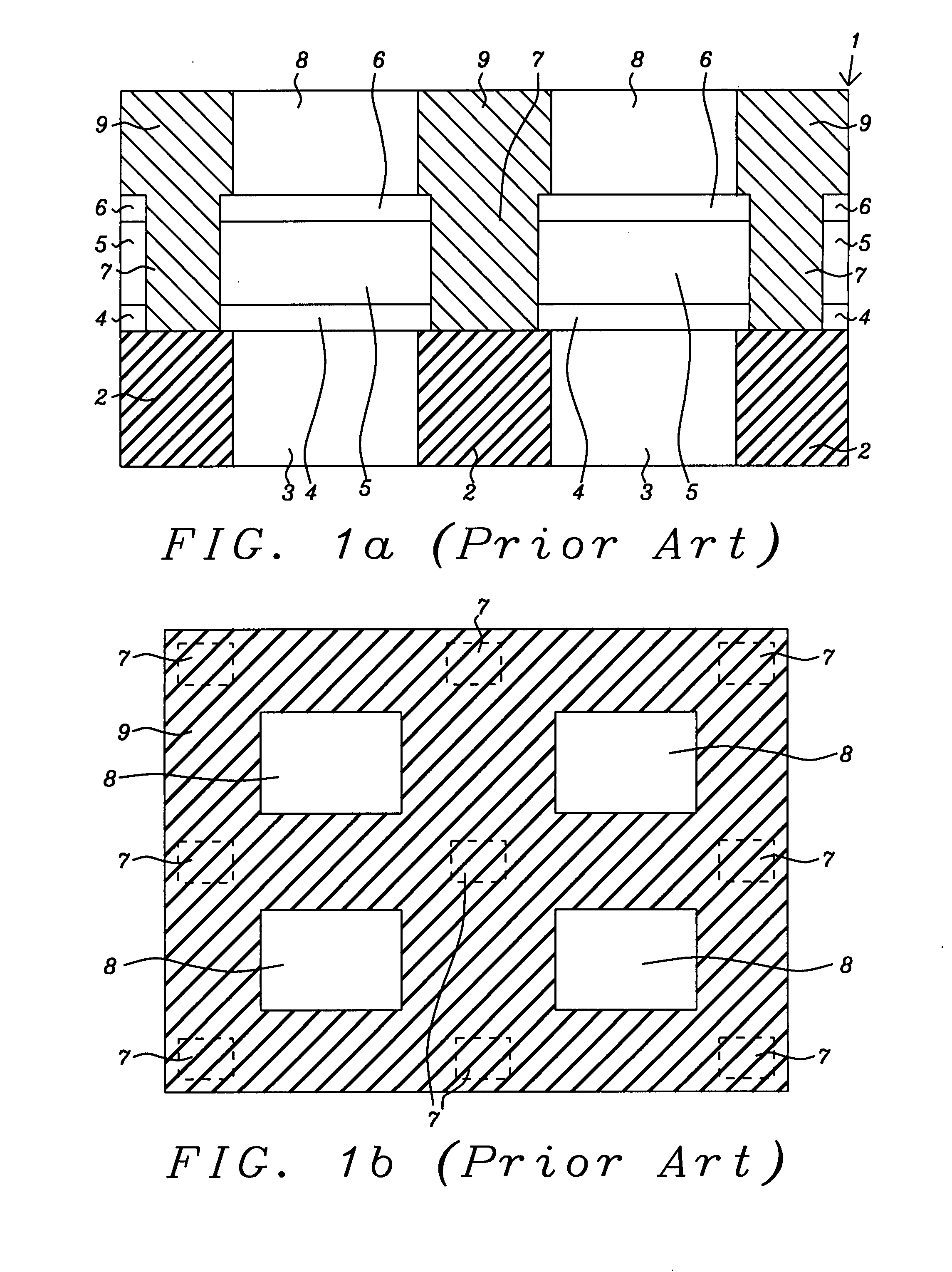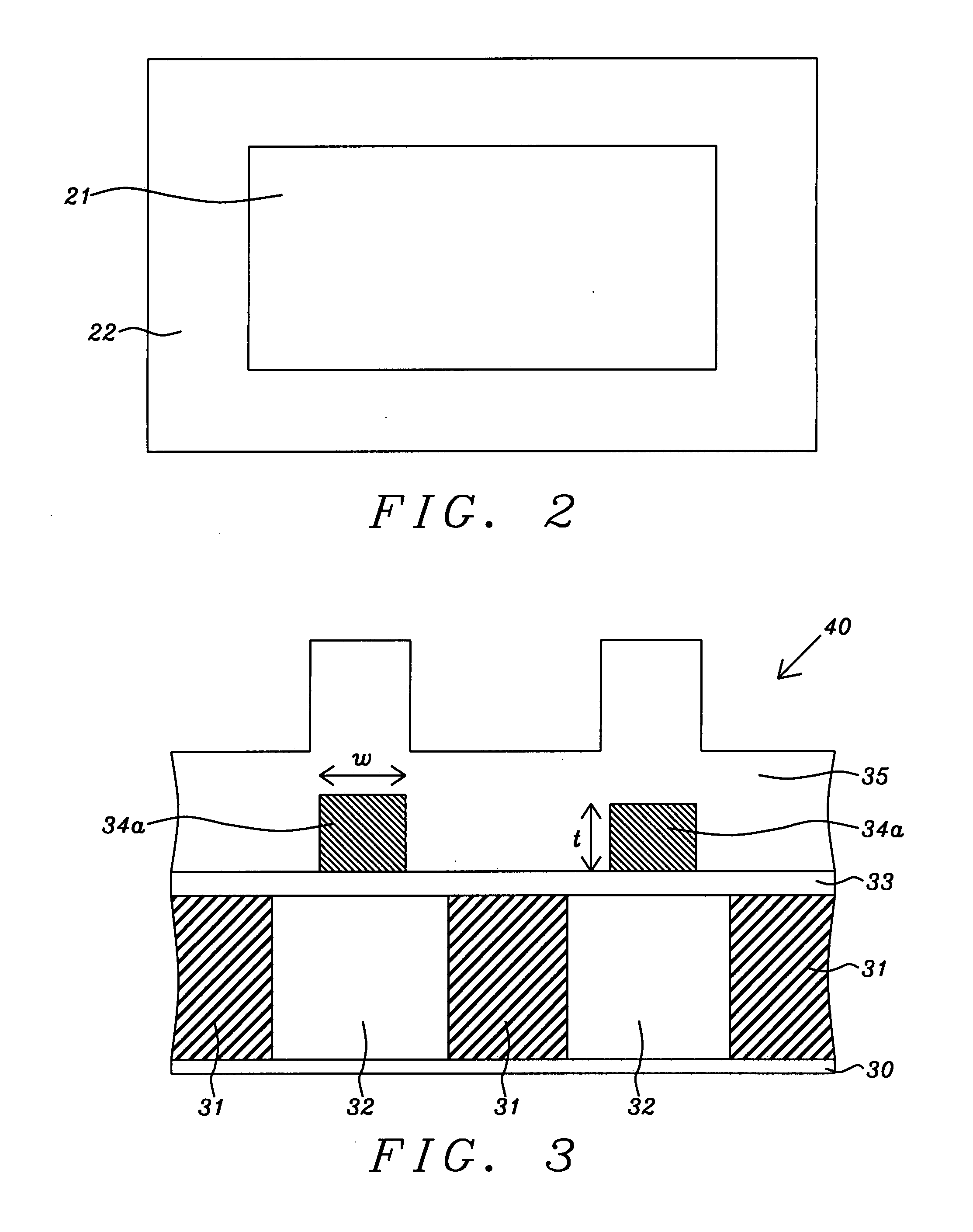Method of magnetic tunneling junction pattern layout for magnetic random access memory
a random access memory and magnetic tunneling technology, applied in the direction of digital storage, instruments, semiconductor devices, etc., can solve the problems of affecting the performance of the magnetic tunneling junction, the difficulty of controlling the distance between the bit and the mtj from wafer to wafer, and the difficulty of the second approach in controlling the distance between the via layer and the mtj array, so as to achieve the effect of minimizing the delamination of the dielectric layer
- Summary
- Abstract
- Description
- Claims
- Application Information
AI Technical Summary
Benefits of technology
Problems solved by technology
Method used
Image
Examples
Embodiment Construction
[0024]The present invention is a novel MTJ pattern layout that minimizes delamination of dielectric layers between a word line (WL) layer and a bit line (BIT) layer in a magnetic memory device, and minimizes dishing and protrusions following a CMP process that planarizes the BE / MTJ / hard mask stack and adjacent MTJ ILD layer. Although the exemplary embodiment depicts a MRAM device, the present invention may also apply to other magnetic memory devices known in the art that require a CMP process to stop on an array of MTJ devices. Drawings are provided by way of example and are not intended to limit the scope of the invention. For example, the number and position of MTJ devices or contact pads depicted in a particular design may not represent an actual layout used in manufacturing but are intended to show one possible layout that could be employed. The MTJ devices may have a top spin valve, bottom spin valve, or multi-layer spin valve configuration as understood by those skilled in the...
PUM
 Login to View More
Login to View More Abstract
Description
Claims
Application Information
 Login to View More
Login to View More - R&D
- Intellectual Property
- Life Sciences
- Materials
- Tech Scout
- Unparalleled Data Quality
- Higher Quality Content
- 60% Fewer Hallucinations
Browse by: Latest US Patents, China's latest patents, Technical Efficacy Thesaurus, Application Domain, Technology Topic, Popular Technical Reports.
© 2025 PatSnap. All rights reserved.Legal|Privacy policy|Modern Slavery Act Transparency Statement|Sitemap|About US| Contact US: help@patsnap.com



